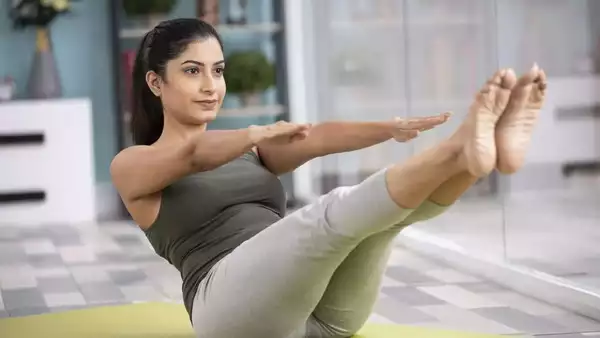Exercise to Undo the Damage of All-Day Sitting
Prolonged sitting has become a common part of our daily routines, whether due to desk jobs, long commutes, or leisure activities. But did you know that sitting for long periods can significantly impact your health? The effects of sitting all day are linked to increased risk of obesity, heart disease, and even early death. Fortunately, a recent study has revealed how exercise can help undo some of this damage.
In this article, we will explore how long you need to exercise to counteract the harmful effects of prolonged sitting. With the right physical activity, you can improve your overall health and reduce the negative impacts of sitting. Let’s dive into the findings of the study and discover effective strategies to reverse the damage of all-day sitting.
1. Understanding the Damage of Prolonged Sitting
When you sit for long periods, several systems in your body are affected. For instance, your metabolism slows down, leading to a decrease in calorie burning and an increase in fat storage. Furthermore, sitting for long periods can negatively affect your muscles, posture, and even your mental well-being.
Effects of Prolonged Sitting on Health:
- Slower metabolism: When sitting for extended periods, your body burns fewer calories, which can contribute to weight gain and fat accumulation.
- Increased risk of cardiovascular disease: Long periods of sitting can increase the risk of heart disease and high blood pressure.
- Weakened muscles and poor posture: Sitting all day leads to muscle atrophy, particularly in the glutes and lower back, affecting posture and mobility.
2. How Exercise Helps to Undo Sitting Damage
The study indicates that even short bursts of physical activity can help undo some of the damage caused by sitting. The key lies in how exercise helps to reactivate your metabolism, improve circulation, and strengthen muscles that weaken from prolonged inactivity.
Key Benefits of Exercise to Combat Sitting Damage:
- Boosts metabolism: Physical activity helps increase calorie burning and prevent weight gain.
- Improves heart health: Regular exercise helps maintain healthy blood pressure and cholesterol levels.
- Strengthens muscles: Engaging in full-body exercises helps tone muscles and correct posture.
Visual Tip:
You can incorporate simple exercises like squats, lunges, and stretches to activate different muscle groups and reverse muscle weakness from sitting.
3. How Long Should You Exercise to Reverse the Effects?
According to the study, engaging in moderate-intensity exercise for just 30 minutes a day can significantly reduce the health risks associated with sitting all day. This can include activities like brisk walking, cycling, or light jogging. The key is consistency.
- Frequency of exercise: Aim for at least 150 minutes of moderate-intensity exercise per week, as recommended by health organizations.
- Breaking up sitting time: It is also beneficial to break up sitting time by standing or walking for a few minutes every hour to keep your body active throughout the day.
Recommended Exercise Duration:
| Type of Exercise | Duration per Day | Frequency per Week |
|---|---|---|
| Moderate-intensity | 30 minutes | 5-7 days |
| Low-intensity activity | 5-10 minutes (every hour) | 3-5 times per day |
4. Best Exercises to Reverse Sitting Damage
Certain exercises can specifically target the areas that are most affected by sitting. These exercises focus on activating your glutes, stretching tight muscles, and improving posture.
Top Exercises to Combat Sitting Damage:
- Glute Bridges: Strengthens the glutes and lower back muscles.
- Standing or Seated Leg Raises: Activates the hip flexors and core muscles.
- Cat-Cow Stretch: Helps alleviate stiffness in the spine and back.
- Chest Openers: A stretch that targets tight chest muscles from slouching.
These exercises don’t require a gym and can be easily done at home or during work breaks.
Quick Tip:
Incorporating a 5-minute stretch routine every hour can make a big difference in preventing muscle stiffness and improving circulation.
5. The Role of Active Breaks Throughout the Day
Rather than spending hours sitting straight through, it’s important to incorporate active breaks throughout your day. Even brief periods of movement can help improve circulation and reduce the harmful effects of sitting.
- Walk for 5-10 minutes every hour: Taking a short walk can help reduce the stiffness and improve blood flow.
- Standing desk: If your job involves sitting for long periods, consider using a standing desk to alternate between sitting and standing.
Benefits of Active Breaks:
- Reduces muscle stiffness and increases flexibility.
- Helps improve focus and energy levels.
- Stimulates circulation and promotes fat burning.
Infographic Idea:
A visual of a daily routine that includes both active breaks and dedicated exercise sessions can provide a clear, actionable plan for readers.
6. Other Tips to Mitigate the Effects of Sitting All Day
In addition to regular exercise, there are simple lifestyle changes you can make to reduce the negative impacts of sitting. These changes can improve posture, mobility, and overall well-being.
- Posture awareness: Maintain good posture while sitting. Sit upright with your back straight and shoulders relaxed.
- Ergonomic workstation setup: Ensure your desk and chair are set up to support proper posture, reducing strain on the lower back and neck.
- Stay hydrated: Drinking water regularly helps maintain energy levels and reduces the risk of fatigue associated with sitting.
The Importance of Regular Exercise to Undo Sitting Damage
Sitting for long periods each day can have detrimental effects on your health, but the good news is that regular exercise can help reverse much of the damage. By engaging in 30 minutes of moderate-intensity exercise daily and breaking up long periods of sitting, you can greatly reduce the health risks associated with a sedentary lifestyle.
Remember, consistency is key! Incorporating small, manageable physical activities throughout the day, along with focused exercise, will help keep your body in peak condition and reduce the long-term effects of sitting.




